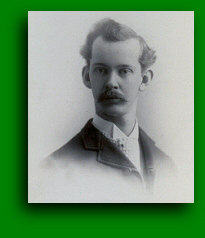Wilbur Lincoln Scoville (1865 - 1942):
 He was born in Bridgeport, Connecticut, January 22 1865 was an American chemist and pharmacist, known for having created in 1912, the SOT (Scoville Organoleptic Test), a test to measure the amount of capsaicin in a chili pepper and that subsequently led to the creation of the Scoville Scale which measures the hotness. Originally S.O.T. provided that an alcoholic extract of oil of capsaicin, taken from a dried chili, was diluted with water and sugar until the sensation of "burning" was no longer perceptible to a set of five tasters. To make it a three out of five people had to agree on the assessment. A single unit of dilution is called SHU (Scoville Heat Units). Scoville gave pure capsaicin the arbitrary value of 16,000,000 SHU as the maximum degree of dilution on the Scoville Scale. In summary, a bell pepper, which contains capsaicin, has a value of zero on the Scoville Scale, indicating that the extract of a sweet pepper is not spicy and you do not need to dilute it. On the contrary, one of the hottest peppers, the Habanero, it can measure a value of more than 300,000 SHU on the Scoville Scale. Being natural products, not all chillies have the same value, it is simply the maximum value registered and officially recognized. The S.O.T. however, had a very large margin of error as dependent on human subjectivity. Were later developed other types of tests, much more sophisticated and precise, as the test HPLC (High Performance Liquid Chromatography, also known as "Method Gillette") done by a modern machine that directly measures the amount of capsaicinoids then converting it into unit of hotness "ASTA". These will then be converted into Scoville units, 1 unit ASTA is equivalent to 15 Scoville units. This conversion is still approximate since the absolute hotness of capsaicinoids has an error of about 20%, and thus also the conversion suffers. The same HPLC test has an error of about 12%.
He was born in Bridgeport, Connecticut, January 22 1865 was an American chemist and pharmacist, known for having created in 1912, the SOT (Scoville Organoleptic Test), a test to measure the amount of capsaicin in a chili pepper and that subsequently led to the creation of the Scoville Scale which measures the hotness. Originally S.O.T. provided that an alcoholic extract of oil of capsaicin, taken from a dried chili, was diluted with water and sugar until the sensation of "burning" was no longer perceptible to a set of five tasters. To make it a three out of five people had to agree on the assessment. A single unit of dilution is called SHU (Scoville Heat Units). Scoville gave pure capsaicin the arbitrary value of 16,000,000 SHU as the maximum degree of dilution on the Scoville Scale. In summary, a bell pepper, which contains capsaicin, has a value of zero on the Scoville Scale, indicating that the extract of a sweet pepper is not spicy and you do not need to dilute it. On the contrary, one of the hottest peppers, the Habanero, it can measure a value of more than 300,000 SHU on the Scoville Scale. Being natural products, not all chillies have the same value, it is simply the maximum value registered and officially recognized. The S.O.T. however, had a very large margin of error as dependent on human subjectivity. Were later developed other types of tests, much more sophisticated and precise, as the test HPLC (High Performance Liquid Chromatography, also known as "Method Gillette") done by a modern machine that directly measures the amount of capsaicinoids then converting it into unit of hotness "ASTA". These will then be converted into Scoville units, 1 unit ASTA is equivalent to 15 Scoville units. This conversion is still approximate since the absolute hotness of capsaicinoids has an error of about 20%, and thus also the conversion suffers. The same HPLC test has an error of about 12%.
The Pure capsaicin is a toxic substance, and if taken directly causes death by respiratory arrest, however the amount required for ingestion to cause the death of a person is seventy kilograms of thirteen grams, equivalent to a couple of tablespoons.
There is in nature a substance ultra hot similar to capsaicin and is the Resiniferatoxin is that you get dall'Euphorbium, a resin derived from a plant similar to a cactus, Euphorbia resinifera, originally from Morocco and well known to Greek physicians and Romans. The resiniferatoxin has a Scoville rating thousand times more spicy pure capsaicin, which is equivalent to over 16 billion Scoville units.

